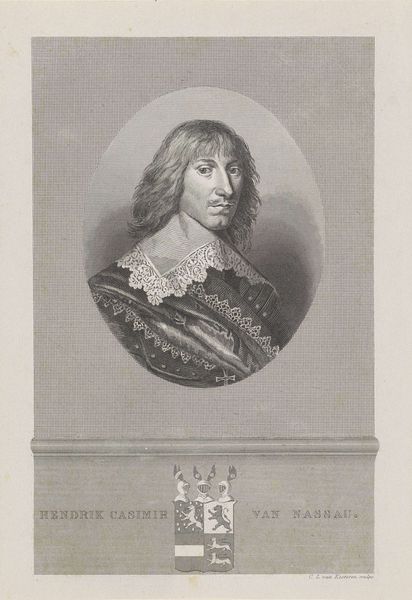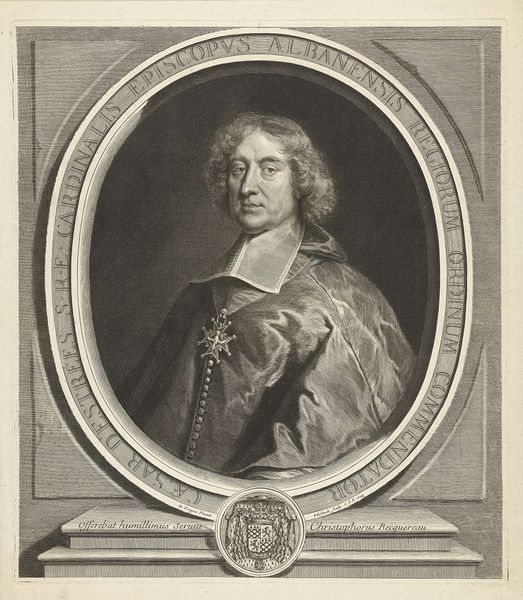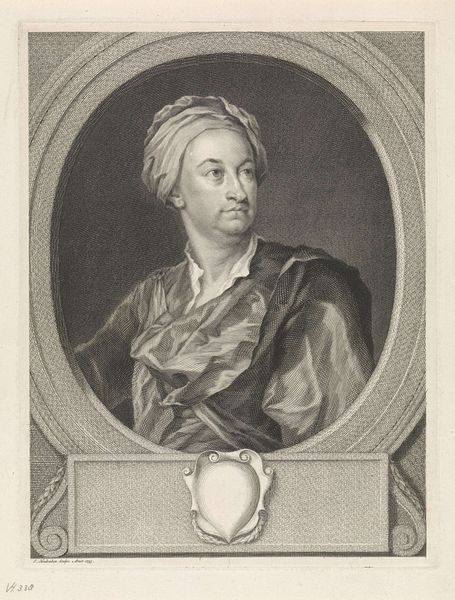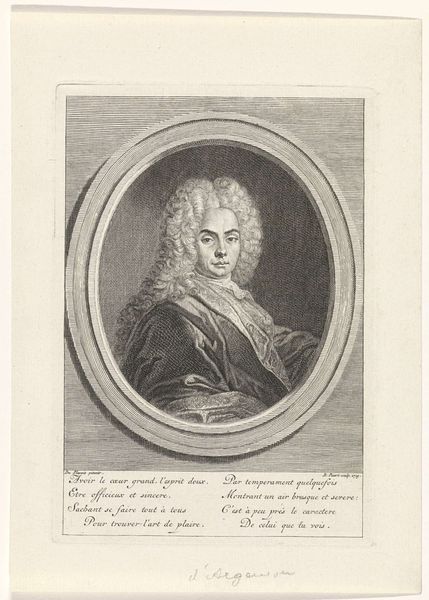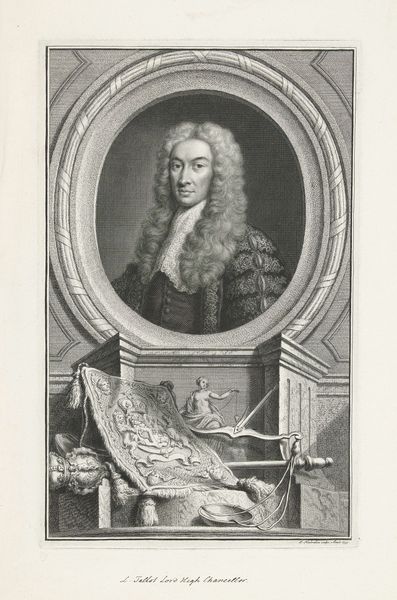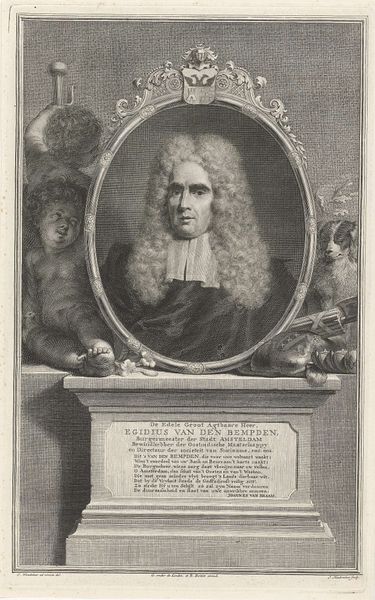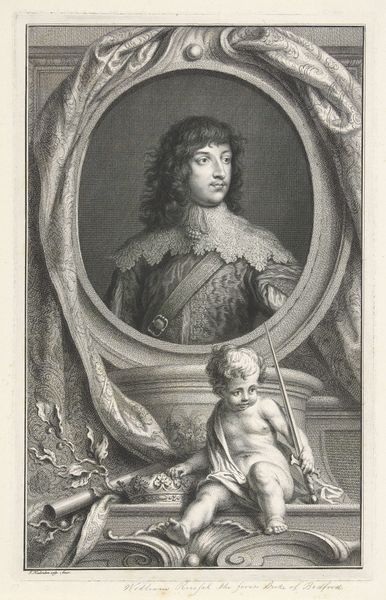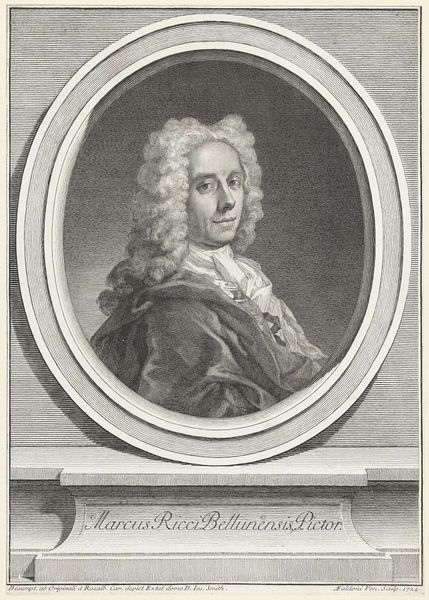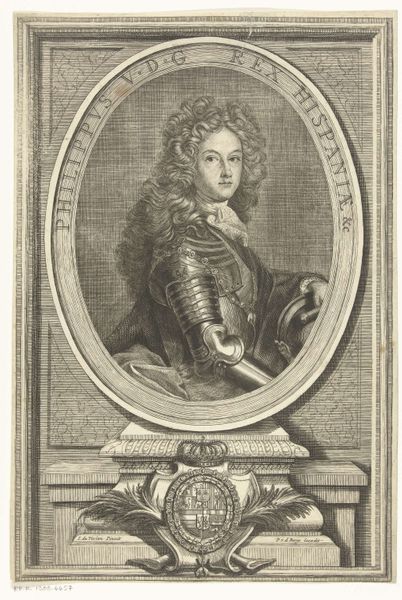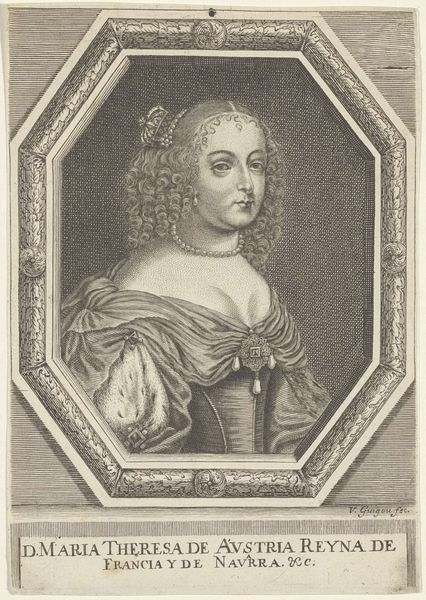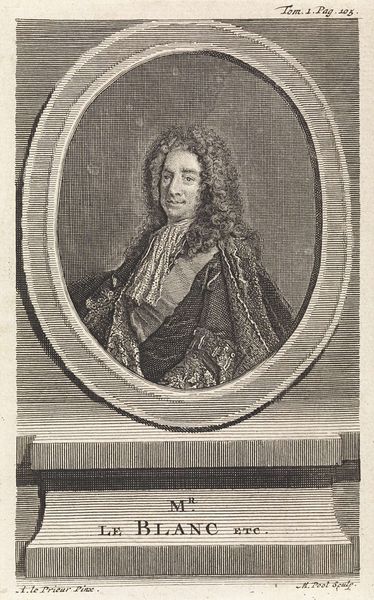
print, engraving
#
portrait
#
baroque
# print
#
old engraving style
#
framed image
#
engraving
Dimensions: height 372 mm, width 237 mm
Copyright: Rijks Museum: Open Domain
Editor: So, here we have Jacob Houbraken's portrait of James Stuart, Duke of Richmond, from between 1738 and 1740. It's an engraving. It’s incredibly detailed, but what strikes me most is the... artifice? It’s so clearly constructed, and the subject seems very aware of his presentation. What do you see in this piece? Curator: The artifice you identify is key. Let’s consider the materials: engraving on paper. This was a mode of reproduction, disseminating images of power. Houbraken wasn’t just making a portrait, he was participating in a system of manufacturing and distribution that solidified the Duke’s image for consumption. Think about the labour involved – the engraver, the printer, and the distributors. How does that shift our understanding of portraiture away from individual representation and toward mass communication? Editor: I hadn’t thought of it that way – more about the means than the man. So the print *is* the message? Curator: Precisely. The Duke's power isn’t just inherent; it’s actively produced and circulated through these material processes. His status is bound to this Baroque era machinery. The elaborate frame and crown reinforce that this isn't just an image of a person; it’s a product. Editor: It’s like early propaganda almost. Was Houbraken simply a cog in that wheel, or was he making a statement? Curator: The question of intention is less interesting than the demonstrable facts of production. Whether Houbraken approved of the Duke isn’t as significant as the role the engraving played in the social fabric of the time. The image reinforced class distinctions by showing off status via print, available for purchase and admiration. Editor: Right, seeing art not as an isolated object but as part of a bigger economic picture is really interesting. I will be paying much closer attention to process from now on. Curator: Indeed, we can start by thinking of images as not isolated forms of unique artistic creation, but products that circulate within social, economic, and power networks.
Comments
No comments
Be the first to comment and join the conversation on the ultimate creative platform.

